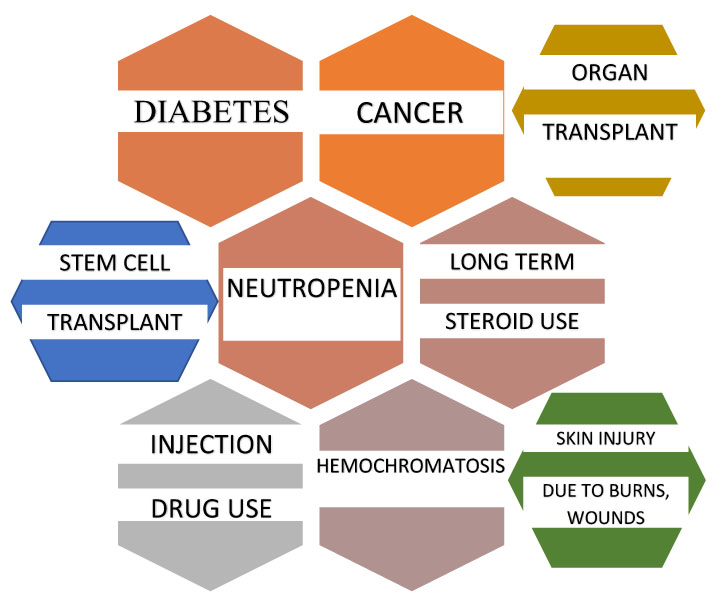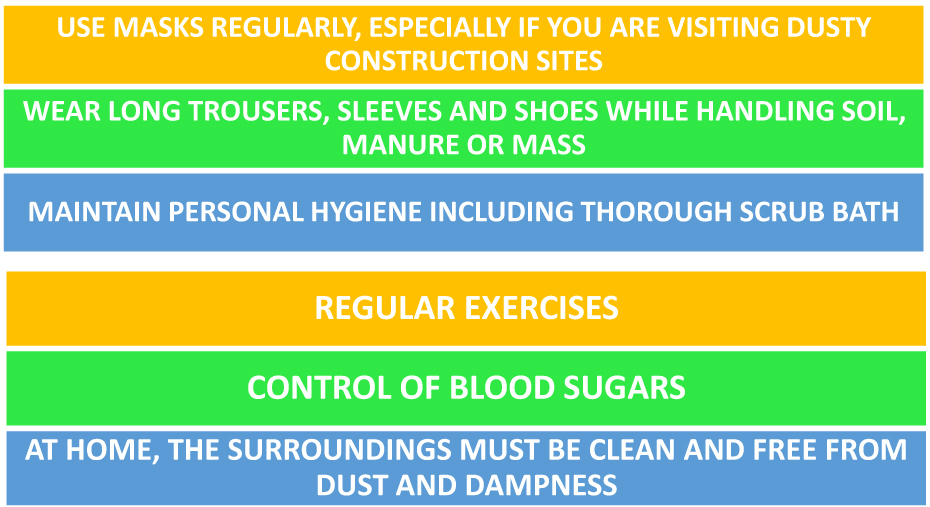- NEED HELP? CALL US NOW
- +919995411505
- [email protected]
Mucormycosis or Black Fungus


Mucormycosis is caused by exposure to mucor mould which is commonly found in soil, plants, manure, and decaying fruits and vegetables. Though it is a rare and fatal infection it does not transmit from one person to the other.
SYMPTOMS
The symptoms of mucormycosis depend on where in the body the fungus is growing.Symptoms of rhinocerebral (sinus and brain) mucormycosis include: Symptoms of pulmonary (lung) mucormycosis include:
Symptoms of pulmonary (lung) mucormycosis include:
 Cutaneous (skin) mucormycosis can look like blisters or ulcers, and the infected area may turn black. Other symptoms include
Cutaneous (skin) mucormycosis can look like blisters or ulcers, and the infected area may turn black. Other symptoms include
 Symptoms of gastrointestinal mucormycosis include:
Symptoms of gastrointestinal mucormycosis include:

Disseminated mucormycosis typically occurs in people who are already sick from other medical conditions, so it can be difficult to know which symptoms are related to mucormycosis. Patients with disseminated infection in the brain can develop mental status changes or coma.

WHERE IS MUCORMYCOSIS FOUND?
Mucormycetes, the group of fungi that cause mucormycosis, are present throughout the environment, particularly in soil and in association with decaying organic matter, They are more common in soil than in air, and in summer and fall than in winter or spring. Most people come in contact with microscopic fungal spores every day, and is impossible to completely avoid coming in contact with mucormycetes.TYPES OF FUNGI THAT CAUSE MUCORMYCOSIS
Several different types of fungi can cause mucormycosis. These fungi are called mucormycetes and belong to the scientific order Mucorales. The most common types that cause mucormycosis are Rhizopus species and Mucor species. Other examples include Rhizomucor species, Syncephalastrum species, Cunninghamella bertholletiae, Apoph ysomyces, Lichtheimia (formerly Absidia), Saksenaea, and Rhizomucor.WHO GETS MUCORMYCOSIS?

MUCORMYCOSIS AND COVID -19
Before coming to mucormycosis in Covid-19 patients it is important to understand that the fungus is predominantly found everywhere in our environment at all the time.IF THE FUNGUS IS COMMON WHY IS IT THAT WE RARELY GET INFECTED BY THEM?
Our body’s defense mechanism is the answer to it. Our immune system is competent enough to continuously fight against these fungal infections and protect us from any lethal infection which otherwise these fungus could have caused.WHY IS THERE AN INCREASED OCCURRENCE OF MUCORMYCOSIS IN COVID-19 PATIENTS?

As we know in normal situations our body’s defense mechanism is competent enough to protect us from any lethal fungal infection caused by exposure to mucor mould. But in case of Covid-19, there is an alteration in the internal milieu of the patient, thus favouring the growth of fungus. Prolonged dosages of steroids and ventilation for the treatment of Covid- 19 weakens the immune system. Medications like broad spectrum antibiotics administered during Covid- 19 not only eliminates the pathogenic bacteria but also the protective commensals and antifungals like Voriconazole inhibits Aspergillosis but mucor remains unscathed and thrives due to lack of competition. All these factors contribute to the increased occurrence of mucormycosis in Covid-19 patients. Additionally, patients with uncontrolled diabetes mellitus and other comorbidities along with the above said factors are highly at risk from this rare yet fatal fungal infection.
PREDISPOSING FACTORS FOR MUCORMYCOSIS

`WHEN TO SUSPECT?
(in covid-19 patients, diabetics or immunosuppressed individuals)
- Sinusitis: nasal blockage or congestion, nasal discharge( blackish/ bloody), local pain on the cheek bone.
- One sided facial pain, swelling or numbness
- Blackish discolouration over bridge of nose/ palate
- Toothache, loosening of teeth, jaw pain
- Blurring of vision or double vision with pain, fever, skin lesion; thrombosis and necrosis
- Chest pain, pleural effusion, haemoptysis, worsening of respiratory symptoms
HOW TO MANAGE?

IN HOSPITAL MANAGEMENT


ONCE DISCHARGED





